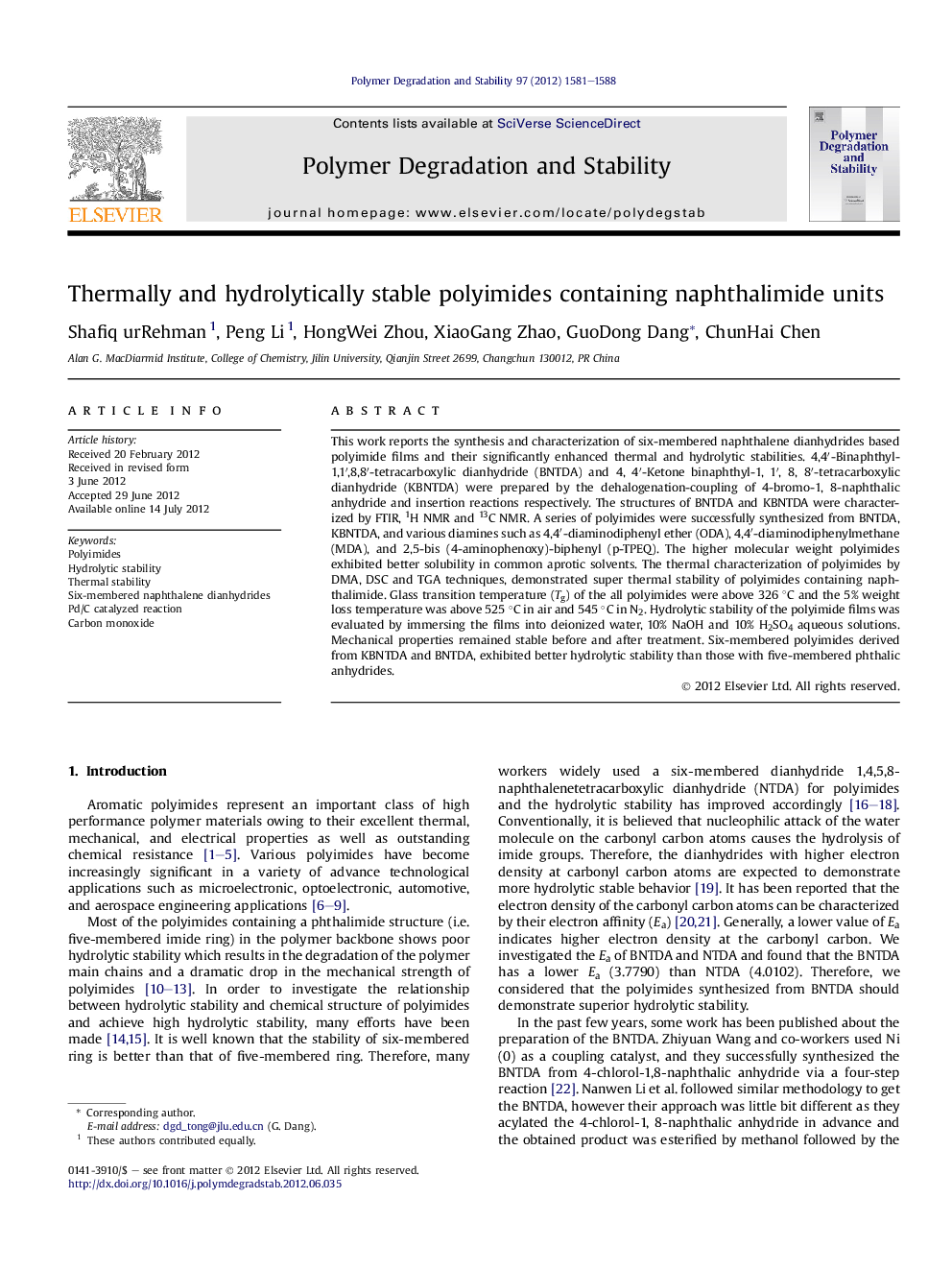| Article ID | Journal | Published Year | Pages | File Type |
|---|---|---|---|---|
| 5202726 | Polymer Degradation and Stability | 2012 | 8 Pages |
Abstract
This work reports the synthesis and characterization of six-membered naphthalene dianhydrides based polyimide films and their significantly enhanced thermal and hydrolytic stabilities. 4,4â²-Binaphthyl-1,1â²,8,8â²-tetracarboxylic dianhydride (BNTDA) and 4, 4â²-Ketone binaphthyl-1, 1â², 8, 8â²-tetracarboxylic dianhydride (KBNTDA) were prepared by the dehalogenation-coupling of 4-bromo-1, 8-naphthalic anhydride and insertion reactions respectively. The structures of BNTDA and KBNTDA were characterized by FTIR, 1H NMR and 13C NMR. A series of polyimides were successfully synthesized from BNTDA, KBNTDA, and various diamines such as 4,4â²-diaminodiphenyl ether (ODA), 4,4â²-diaminodiphenylmethane (MDA), and 2,5-bis (4-aminophenoxy)-biphenyl (p-TPEQ). The higher molecular weight polyimides exhibited better solubility in common aprotic solvents. The thermal characterization of polyimides by DMA, DSC and TGA techniques, demonstrated super thermal stability of polyimides containing naphthalimide. Glass transition temperature (Tg) of the all polyimides were above 326 °C and the 5% weight loss temperature was above 525 °C in air and 545 °C in N2. Hydrolytic stability of the polyimide films was evaluated by immersing the films into deionized water, 10% NaOH and 10% H2SO4 aqueous solutions. Mechanical properties remained stable before and after treatment. Six-membered polyimides derived from KBNTDA and BNTDA, exhibited better hydrolytic stability than those with five-membered phthalic anhydrides.
Related Topics
Physical Sciences and Engineering
Chemistry
Organic Chemistry
Authors
Shafiq urRehman, Peng Li, HongWei Zhou, XiaoGang Zhao, GuoDong Dang, ChunHai Chen,
